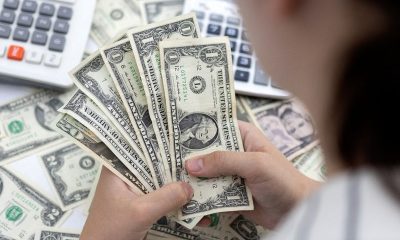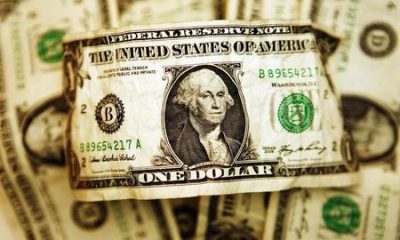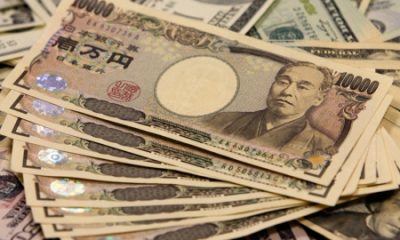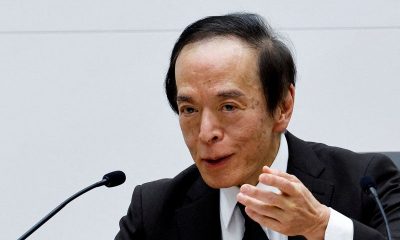Economy
Fed done hiking rates, but higher for longer message gaining traction – Reuters poll
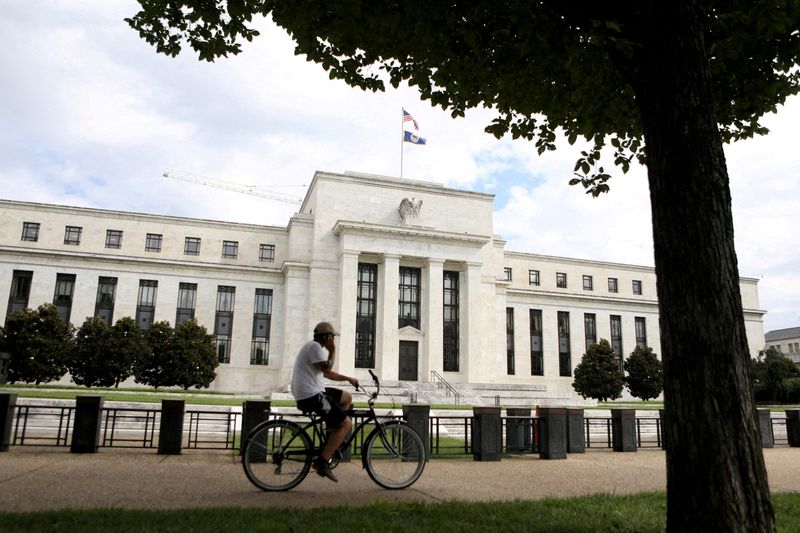
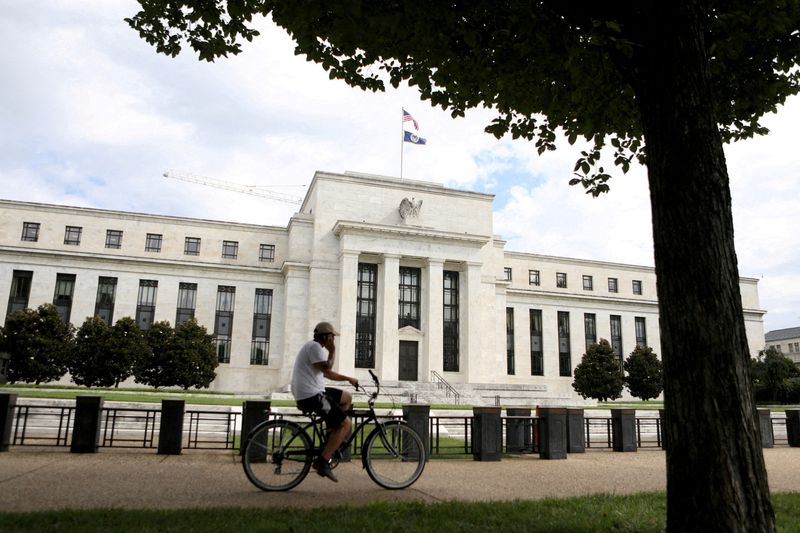
© Reuters. FILE PHOTO: A cyclist passes the Federal Reserve building in Washington, DC, U.S., August 22, 2018. REUTERS/Chris Wattie/File Photo
By Prerana Bhat
BENGALURU (Reuters) – The U.S. Federal Reserve will keep its key interest rate on hold on Nov. 1 and may wait longer than previously thought before cutting it, according to economists in a Reuters poll, as the central bank’s higher-for-longer message gains traction.
While a slight majority still see a cut before the middle of 2024, a significant minority of forecasters, around 45%, now see no rate reduction until the second half of next year or later, up from 29% in the last poll.
In the weeks since the Fed’s September meeting where it opted to pause hiking rates, inflation surprised to the upside and payrolls unexpectedly rose by the most in eight months, providing some support for the roughly one-quarter of economists polled who expect another hike.
But financial conditions have also tightened since then, with yields on longer dated Treasury debt rising to multi-year highs. Several Fed officials have indicated that may work as a substitute to further rate rises, while still stressing rates will remain higher for longer.
More than 80% of economists, 90 of 111, in an Oct. 13-18 Reuters poll predicted the Federal Open Market Committee will hold rates in a 5.25%-5.50% range at the conclusion of its Oct. 31-Nov. 1 meeting.
That was in line with market expectations and, if realized, would be the first time in the current cycle that the Fed opted to pause for a second consecutive meeting.
Twenty-six of 111 saw one more rate hike this year, matching the Fed’s median “dot plot” projections from last month. Only one saw two more hikes.
“Though recent upside surprises in September employment and CPI (inflation) suggest greater risk of further rate hikes, our base case remains that the Fed will remain on hold at the current rate…until June of next year,” said Brett Ryan, senior U.S. economist at Deutsche Bank.
“However, if the data continue to outperform, the Fed is likely to resume hiking.”
Expectations for policy could shift following a speech by Fed Chair Jerome Powell to the Economic Club of New York on Thursday.
HIGHER FOR LONGER SINKING IN
While the chances of another rate hike this year are low, so are the odds of policy easing anytime soon, according to the poll.
Over 80% of economists, 91 of 111, had no rate cut in their forecast until at least the second quarter of next year.
Slightly more than half, 61, expect the Fed to start cutting before mid-year. That 55% majority slipped from over 70% in a September poll, extending a trend of rate cut calls being pushed to later. The median expectation for the first cut also shifted to Q3 from Q2.
As recently as July, a majority of economists polled said the Fed would start cutting by end-March.
All but two of 28 respondents to an extra question said the bigger risk was the first rate cut comes later than they expect.
“There will be some point next year where inflation has slowed enough, although it’s not back to target and…the growth situation is deteriorated enough where there’s pressure on Fed officials to do something,” said Lawrence Werther, chief U.S. economist at Daiwa Capital Markets.
“I would not be surprised though, if such a situation came to pass more so in Q3, rather than Q2.”
Inflation was expected to moderate over the coming months but remain sticky, with all inflation measures polled by Reuters – the consumer price index, core CPI, personal consumption expenditures (PCE) and core PCE – above the 2% PCE target until at least 2025.
The world’s No. 1 economy was expected to expand 2.2% this year and 1.0% in 2024 and continue to add hundreds of thousands of jobs over coming quarters. The jobless rate, currently 3.8%, was predicted to pick up slightly to average 4.2% in 2024.
(For other stories from the Reuters global economic poll:)
Economy
Russian central bank says it needs months to make sure CPI falling before rate cuts -RBC


© Reuters. Russian Central Bank Governor Elvira Nabiullina attends a news conference in Moscow, Russia June 14, 2019. REUTERS/Shamil Zhumatov/File Photo
MOSCOW (Reuters) – Russia’s central bank will need two to three months to make sure that inflation is steadily declining before taking any decision on interest rate cuts, the bank’s governor Elvira Nabiullina told RBC media on Sunday.
The central bank raised its key interest rate by 100 basis points to 16% earlier in December, hiking for the fifth consecutive meeting in response to stubborn inflation, and suggested that its tightening cycle was nearly over.
Nabiullina said it was not yet clear when exactly the regulator would start cutting rates, however.
“We really need to make sure that inflation is steadily decreasing, that these are not one-off factors that can affect the rate of price growth in a particular month,” she said.
Nabiullina said the bank was taking into account a wide range of indicators but primarily those that “characterize the stability of inflation”.
“This will take two or three months or more – it depends on how much the wide range of indicators that characterize sustainable inflation declines,” she said.
The bank will next convene to set its benchmark rate on Feb. 16.
The governor also said the bank should have started monetary policy tightening earlier than in July, when it embarked on the rate-hiking cycle.
Economy
China identifies second set of projects in $140 billion spending plan


© Reuters. FILE PHOTO: Workers walk past an under-construction area with completed office towers in the background, in Shenzhen’s Qianhai new district, Guangdong province, China August 25, 2023. REUTERS/David Kirton/File Photo
SHANGHAI (Reuters) – China’s top planning body said on Saturday it had identified a second batch of public investment projects, including flood control and disaster relief programmes, under a bond issuance and investment plan announced in October to boost the economy.
With the latest tranche, China has now earmarked more than 800 billion yuan of its 1 trillion yuan ($140 billion) in additional government bond issuance in the fourth quarter, as it focuses on fiscal steps to shore up the flagging economy.
The National Development and Reform Commission (NDRC) said in a statement on Saturday it had identified 9,600 projects with planned investment of more than 560 billion yuan.
China’s economy, the world’s second largest, is struggling to regain its footing post-COVID-19 as policymakers grapple with tepid consumer demand, weak exports, falling foreign investment and a deepening real estate crisis.
The 1 trillion yuan in additional bond issuance will widen China’s 2023 budget deficit ratio to around 3.8 percent from 3 percent, the state-run Xinhua news agency has said.
“Construction of the projects will improve China’s flood control system, emergency response mechanism and disaster relief capabilities, and better protect people’s lives and property, so it is very significant,” the NDRC said.
The agency said it will coordinate with other government bodies to make sure that funds are allocated speedily for investment and that high standards of quality are maintained in project construction.
($1 = 7.1315 renminbi)
Economy
Russian central bank says it needs months to make sure CPI falling before rate cuts -RBC


© Reuters. Russian Central Bank Governor Elvira Nabiullina attends a news conference in Moscow, Russia June 14, 2019. REUTERS/Shamil Zhumatov/File Photo
MOSCOW (Reuters) – Russia’s central bank will need two to three months to make sure that inflation is steadily declining before taking any decision on interest rate cuts, the bank’s governor Elvira Nabiullina told RBC media on Sunday.
The central bank raised its key interest rate by 100 basis points to 16% earlier in December, hiking for the fifth consecutive meeting in response to stubborn inflation, and suggested that its tightening cycle was nearly over.
Nabiullina said it was not yet clear when exactly the regulator would start cutting rates, however.
“We really need to make sure that inflation is steadily decreasing, that these are not one-off factors that can affect the rate of price growth in a particular month,” she said.
Nabiullina said the bank was taking into account a wide range of indicators but primarily those that “characterize the stability of inflation”.
“This will take two or three months or more – it depends on how much the wide range of indicators that characterize sustainable inflation declines,” she said.
The bank will next convene to set its benchmark rate on Feb. 16.
The governor also said the bank should have started monetary policy tightening earlier than in July, when it embarked on the rate-hiking cycle.

 Forex2 years ago
Forex2 years agoForex Today: the dollar is gaining strength amid gloomy sentiment at the start of the Fed’s week

 Forex2 years ago
Forex2 years agoHow is the Australian dollar doing today?

 Forex1 year ago
Forex1 year agoUnbiased review of Pocket Option broker

 Forex2 years ago
Forex2 years agoDollar to pound sterling exchange rate today: Pound plummeted to its lowest since 1985

 Cryptocurrency2 years ago
Cryptocurrency2 years agoWhat happened in the crypto market – current events today

 World2 years ago
World2 years agoWhy are modern video games an art form?

 Stock Markets2 years ago
Stock Markets2 years agoMorgan Stanley: bear market rally to continue

 Economy2 years ago
Economy2 years agoCrude oil tankers double in price due to EU anti-Russian sanctions





